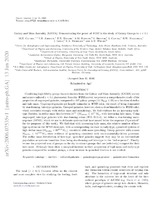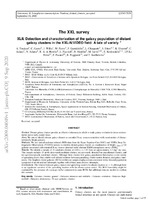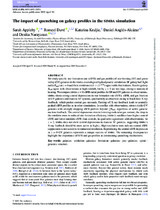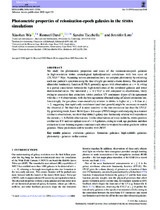| dc.description.abstract | Combining high-fidelity group characterisation from the Galaxy and Mass Assembly (GAMA) survey
and source-tailored z < 0.1 photometry from the WISE survey, we present a comprehensive study of the
properties of ungrouped galaxies, compared to 497 galaxy groups (4≤ NFoF ≤ 20) as a function of stellar
and halo mass. Ungrouped galaxies are largely unimodal in WISE color, the result of being dominated
by star-forming, late-type galaxies. Grouped galaxies, however, show a clear bimodality in WISE color,
which correlates strongly with stellar mass and morphology. We find evidence for an increasing earlytype fraction, in stellar mass bins between 1010 .Mstellar . 1011 M , with increasing halo mass. Using
ungrouped, late-type galaxies with star-forming colors (W2−W3>3), we define a star-forming mainsequence (SFMS), which we use to delineate systems that have moved below the sequence (“quenched”
for the purposes of this work). We find that with increasing halo mass, the relative number of latetype systems on the SFMS decreases, with a corresponding increase in early-type, quenched systems at
high stellar mass (Mstellar > 1010.5 M ), consistent with mass quenching. Group galaxies with masses
Mstellar < 1010.5 M show evidence of quenching consistent with environmentally-driven processes.
The stellar mass distribution of late-type, quenched galaxies suggests they may be an intermediate
population as systems transition from being star-forming and late-type to the “red sequence”. Finally,
we use the projected area of groups on the sky to extract groups that are (relatively) compact for their
halo mass. Although these show a marginal increase in their proportion of high mass and early-type
galaxies compared to nominal groups, a clear increase in quenched fraction is not evident. | en_US |




